Golden eagle (Aquila chrysaetos)
Considering that the lion is the king of mammals, the golden eagle deserves to be called the king of birds. Anderson Silva, a Brazilian MMA fighter once said, ‘If only the power was significant, the elephant, not the lion would be the king’. We are aware that this statement is a little bit perverse, for according to the list of the most powerful birds of prey the crowned eagle is the mightiest bird of all. But, how can one refuse the golden eagle’s strength and courage if it is able to attack a human or a wolf…?
Classification
- Kingdom: Animalia
- Phylum: Chordata
- Class: Aves
- Order: Accipitriformes
- Family: Accipitridae
- Genus: Aquila
- Species: Aquila chrysaetos
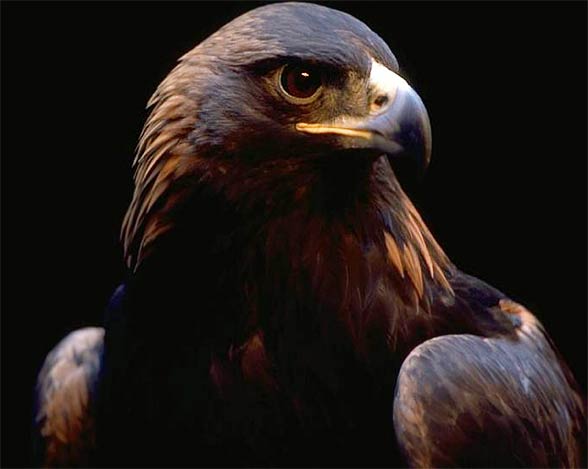
Subspecies:
- Aquila chrysaetos canadensis – North America
- Aquila chrysaetos chrysaetos – Europe (apart from the island states, Denmark and the Iberian Peninsula)
- Aquila chrysaetos daphanea – Central Asia
- Aquila chrysaetos homeryi – the Iberian Peninsula, Middle East, North Africa, Iran, Caucasus mountains
- Aquila chrysaetos japonica – Korean Peninsula, Japan
- Aquila chrysaetos kamtschatica – East of the Altai mountains
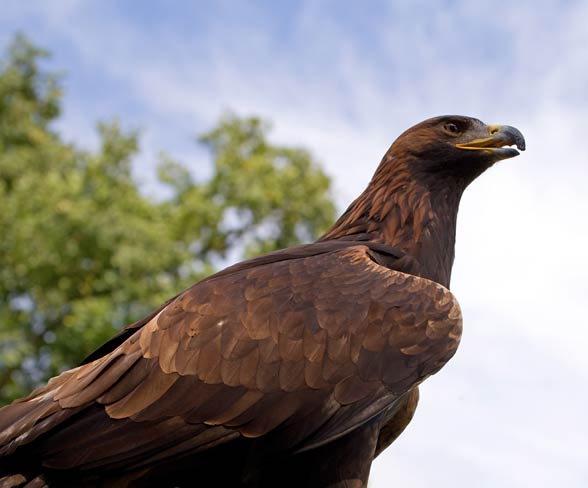
Areas of occurrence
The Holarctic (Holarctis) is its kingdom, nevertheless, it disappeared from many of its primary habitats, as these areas were colonized by humans.
It lives in the north and west regions of the USA, eastern Canada, among the European mountain ranges, North and Central Asia, sometimes it is also observed in Northern Africa. In Europe, it has favored the High Tatra Mountains and the Alps, as well as the forest and mountains of northern Sweden. It most often inhabits secluded regions, uncontaminated by human civilization.
The golden eagle may adapt to many kinds of habitats, but it definitely feels most comfortable in the open or semi-open hunting territories. Indigenous vegetation seems to best fit its needs; the bird also avoids developed urban areas, agrarian fields, and thick forest formations.
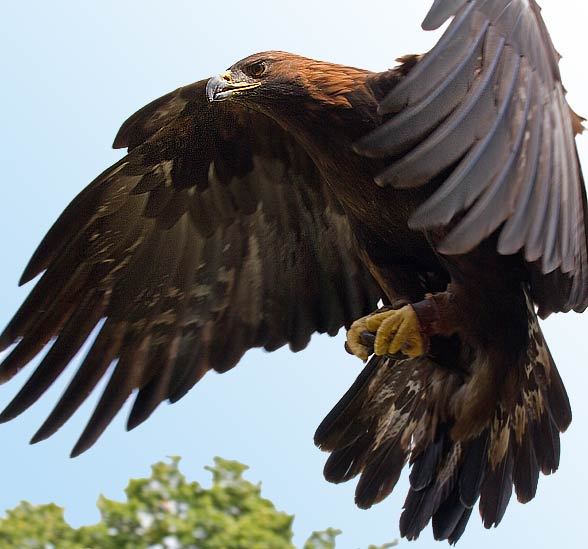
In the uninhabited regions e.g. in southern Yukon it is regularly observed in the waste landfills as well as it is lured by roadkill. However the largest populations live in mountain areas and also nest there, they sometimes choose lowland habitats if the living conditions are opportunely.
Migrations
Some eagles migrate, while others remain over a certain area throughout the whole year, it depends on the inhabited region – eagles living in warmer habitats do not tend to migrate, yet birds from Alaska and Canada fly to the south of the continent in early autumn.
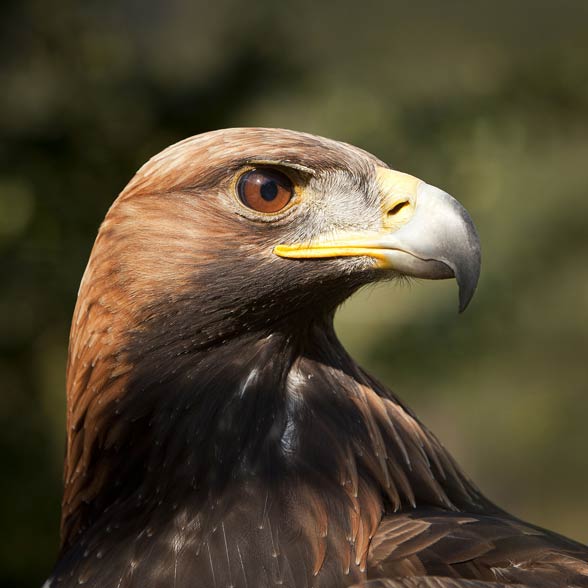
Characteristics
Appearance
Size
One of the largest birds of prey, with dark brown feathering and impressive wings. Its body length ranges from 66 – 102 cm (26 – 40 in) while the wingspan is 1.8 – 2.34 m (5.9 – 7.7 ft). The largest subspecies – Aquila chrysaetos daphanea – weighs from 4.05 to 6.35 kg (8.93 to 13.99 lb), while the lightest one – Aquila chrysaetos japonica – reaches about 2.5 kg (5.5 lb) (females) and about 3.25 kg (7.16 lb) (males). The average body weight in terms of the species as a whole is about 3.6 kg (7.9 lb) for males and 5.1 kg (11.2 lb) for females. The North American birds are often smaller than their Eurasian cousins, yet exceptional cases do occur.
Sexual dimorphism in terms of plumage does not occur, but it is clearly visible in terms of size, as females are usually larger and heavier than males.
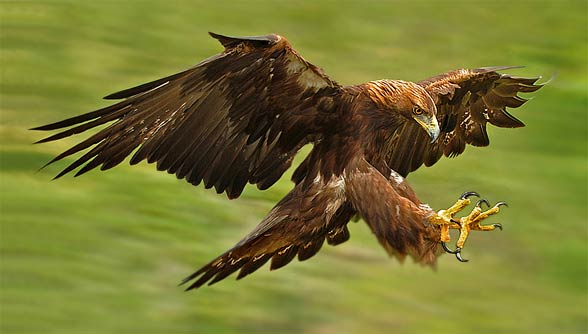
Coloration
Adult birds are dark brown colored with a golden nape and back of the head (hence the name), sometimes grey feathers over the tail and flight feathers are visible. There are subtle coloration dissimilarities between subspecies. The leg feathers have the same color as the rest of the body, while the tarsus is bright yellow. Furthermore, some birds, especially originating in North America, have white ‘epaulettes’. Their beak is yellow, hooky with a dark tip, the skin around the eyes also appears yellowish.

Offspring
Adolescent eagles are similar to adults, but they appear darker with the almost black rear end, especially eagles from East Asia. Young eagles in remaining populations are fawner, being white over 2/3 of their tail, having a wide stripe at the tip.
It is not uncommon for young eagles to have white spots forming a crescent on the flight feathers. Eagles younger than 12 months have the most white elements, over time the whiteness is transformed in the russet brown color. After 3 years the tectrices and tail grow darker. The final coloration is reached around 5-6 years of age.

Vocalizations (sounds)
As many eagles are famous for their loud vocalizations, the golden eagle has a distinctive quiet manner, even in the mating season. Several occasions of single vocalizations emitted by this bird were recorded around its nest.
The golden eagle’s voice is weak, shrill and high-pitched, some consider it to be ‘pitiable’ or ‘puppy-like’ – this sounds at least bizarre considering the great size and character of this animal. Most often birds emit sounds to communicate with other eagles, sometimes between parents and offspring, rarely speaking up to mark their territory or to ‘reach an agreement’ with a partner.
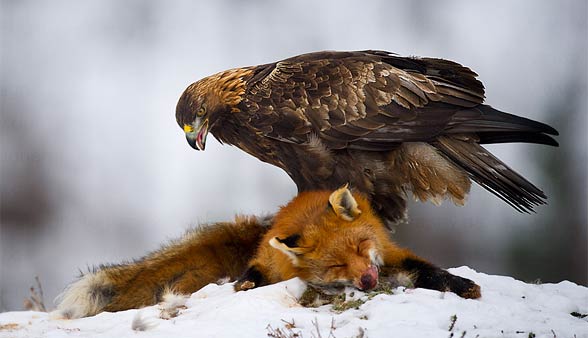
Diet and hunting technique
The golden eagle eats mostly small mammals, bringing larger animals e.g. reindeers and elks to its diet only in form of carrion. It hunts for young foxes, ermines and minks, sometimes catches small birds, lizards and snakes. It happens to hunt young chamois by forcing them down the cliff.
Most of its prey is caught on the ground, but it sometimes hunts for birds mid-flight. It flies over the mountain slopes and streams to scare the potential victim towards the open ground. It benefits from its outstanding eyesight during hunts, allowing it to spot prey from afar.
It hunts during the day, rarely before sunrise or after sunset. An adult eagle needs 230 – 250 g (8 – 9 oz) of meat every day to survive, although it can endure a weeklong hunger, after which it devours about 900 g (32 oz)of food in one sitting.
Powerful talons ensure the effectiveness of hunts, as their pressing force is about 15 times stronger than a human hand.
A golden eagle trained by falconers can even hunt down a wolf. However, in the wild such cases are rare. A trained eagle can attack a human.
A documented attack of a golden eagle tackling a sika deer (Cervus nippon) in Siberia is presented later in the article.
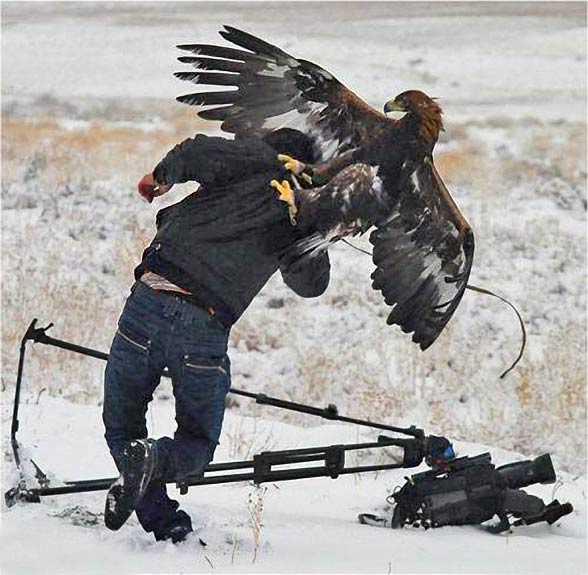
Breeding
In the reproductive season, prior to copulation, courtship including sinuous flights alone or with a partner takes place. In order to show its dominance, the male grabs a stone, drops it at a high altitude, and then quickly performs an impressive dive catching it over again.
This distinctive show is sometimes repeated more than 3 times. The female reciprocates by taking a lump of soil and doing the same thing male did. However, contrary to the customs of bald eagles (Haliaeetus leucocephalus), mating does not take place every year.
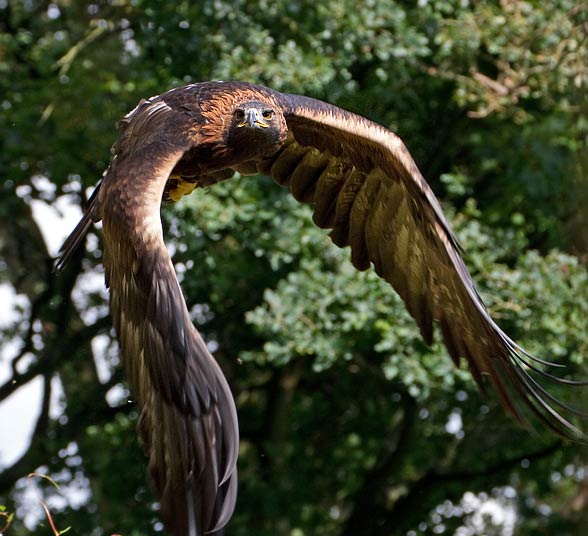
Nests
A pair usually builds several nests on their territory and uses them alternately throughout a few years. The nest may grow up to 200 cm (79 in) in diameter.
A female lays eggs in March or April, beginning incubation even before the second egg is laid, hence the 3-4 day interval between chicks’ hatching.
The incubation, which lasts for 43 – 45 days is both mother’s and father’s duty, is followed by the hatching of two young eagles. However, sometimes the older and stronger one kills the younger (or the younger dies of hunger).
After about 3 months the offspring feathers, being able to fly after 65 – 70 days. The most serious threat for young eagles are the torrential rains and excessive heat, which forces the parents to adapt the nesting spot to the local climate requirements.
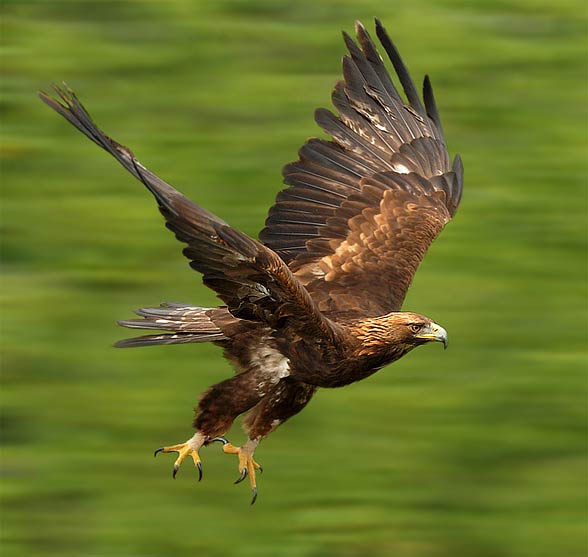
Flight speed – one of the fastest birds in the world
In open-air, the golden eagle may reach 130 km/h (81 mph) (nearly as fast as a common swift), although its mean speed usually does not exceed 45-50 km/h (28-31 mph).
During hunts, its velocity in a diving flight may reach 190 km/h (118 mph).
In a dive towards prey or during mating performances (see above) with its wings tucked alongside its body, the golden eagle reaches speeds ranging from 240 km/h to 320 km/h (149 to 199 mph) , which is almost as fast as the peregrine falcon (Falco peregrinus). This means that the golden eagle is one of the fastest animals on Earth. Although less agile in the air (due to its size) than a peregrine falcon, it is almost equally fast.
The golden eagle seems to be the second fastest animal and bird on Earth.
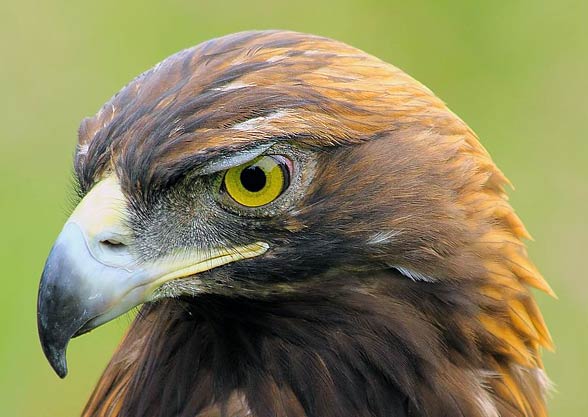
Golden eagle in Poland
The golden eagle is an extremely rare species in Poland – it is estimated that there are about 30 – 35 breeding pairs, which live mainly in the Tatra mountains, Low Beskids, Beskid Sadecki, Pieniny and Bieszczady mountains. During autumn and winter young golden eagles from northern Europe may be observed all over the country, seeking their own territory.
Conservation status
The golden eagle is a strictly protected species.

Detailed characteristics / size
Golden eagle (Aquila chrysaetos)
- Body length: 66 – 102 cm (26 – 40 in)
- Wingspan: 1.8 – 2.34 m (5.9 – 7.68 ft) (widest recorded in captivity 2.81 m [9.22 ft])
- Wing length: 52 – 72 cm (20 – 28 in)
- Tail length: 26.5 – 38 cm (10.4 – 15 in)
- Tarsus length: 9.4 – 12.2 cm (3.7 – 4.8 in)
- Beak length: about 6 cm (2.36 in)
- Body mass:
- females: 3.25 – 6.35 kg (7.16 – 13.99 lb), heaviest – 7.2 kg (15.9)
- males: 2.5 – 4.05 kg (5.5 – 8.92 lb), heaviest in captivity 12.1 kg (26.7 lb)
- Lifespan: 15 – 20 years in the wild (oldest recorded 32 years), 40 – 45 years in captivity
Sexual dimorphism is apparent in terms of size – females are larger and heavier than males.
Speed:
- In a diving flight: 240 km/h (149 mph) (on average); 320 km/h (199 mph) (top speed)
- In a horizontal flight: 45-50 km/h (28-31 mph) (usually); 130 km/h (81 mph) (top speed)
How heavy a victim could a golden eagle lift up?
According to some sources the golden eagle is able to fly with prey weighing about 8 kg (17.6 lb). Other sources claim that lifting a weight of 4 (8.8 lb) or even 2 kg (4.4 lb) requires opportunely upward currents. An eagle can fly e.g. down a slope with a heavier victim (like a chamois), although lifting it upwards is impossible.
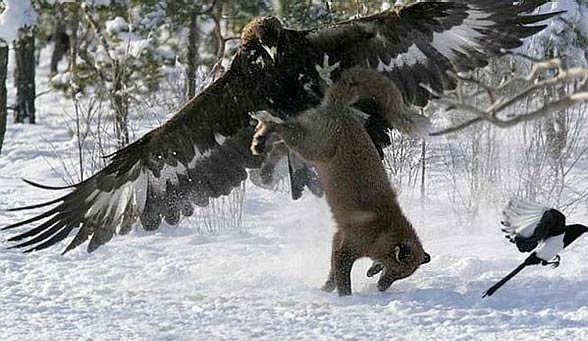
Golden eagle – interesting facts
- The golden eagle has the fifth widest wingspan
- This species is 7th in the world in terms of body weight. The heaviest found female weighed 7.2 kg (15.8 lb) (12.1 kg [ 26.7 lb] in captivity)
- The golden eagle molts (feathers) between March/ April and September/October every year.
- In the past, many golden eagles were killed by ranchers out of fear for cattle and smaller livestock. Withal, the analysis indicated that this bird’s influence on the numbers of livestock was only vestigial. Today the eagle is protected by law.
- A pair of golden eagles occupy a territory reaching even 155 km2 (60 mi2).
- As a result of the usage of poisons such as DDT and dieldrin in the past, the reproductive abilities of the golden eagle have decreased. Despite eliminating these substances, poisonings are still the most serious threat for these mighty birds.
- Berkut is the Ukrainian name for the golden eagle. A ‘famous’ Ukrainian militia special forces unit, (which gained its gruesome fame by pacifications of Maidan Nezalezhnosti square protesters in Kyiv, Ukraine) is named after this eagle species – Berkut (ukr. Беркут).
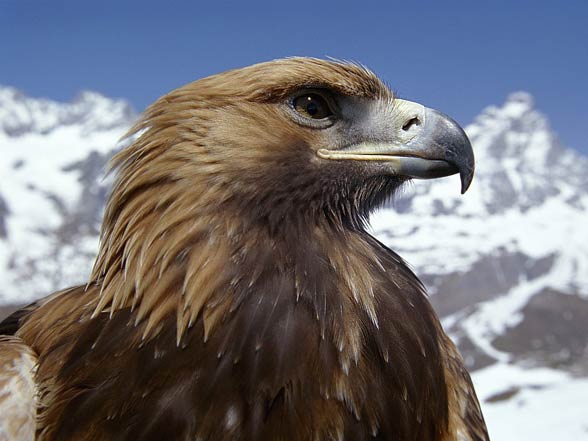
The golden eagle’s attack on a deer
An extremely rare phenomenon, which is an eagle attacking as large an animal like a deer was documented on 12 August 2011 in Russia by an automatic camera. This camera was used by Linda Kerley from the Zoological Society of London (ZSL) and Jonathan Slaght from Wildlife Conservation Society (WCS) to track Siberian tigers.
The camera took 3 shots, which picture the eagle attacking a young deer. These photos are presented below.

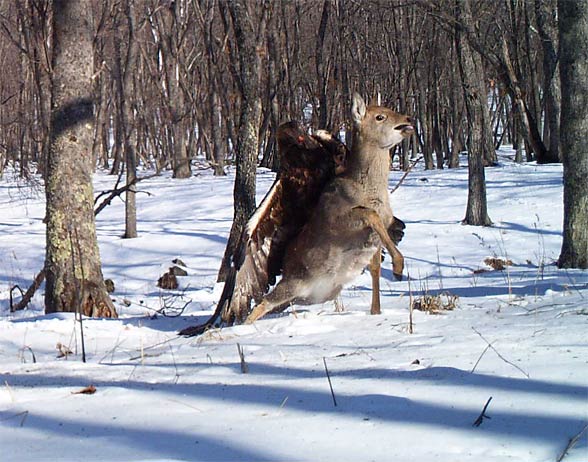
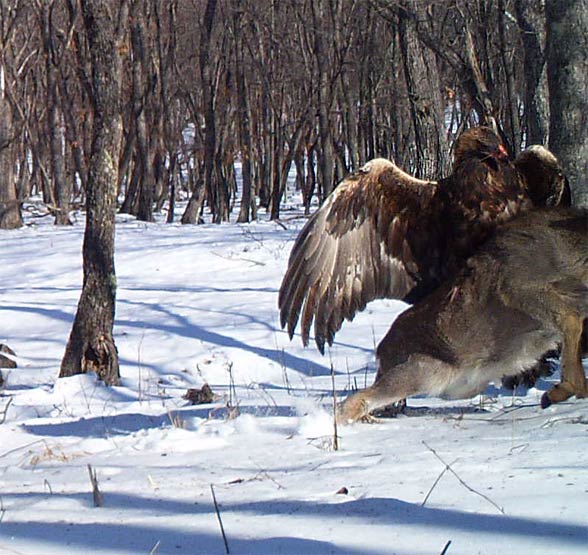
Golden eagle – gallery
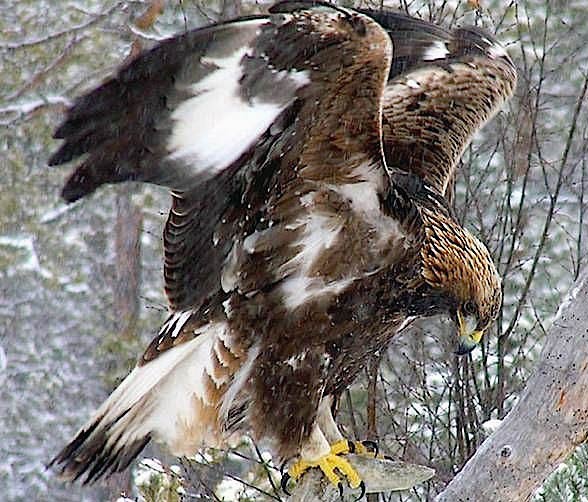

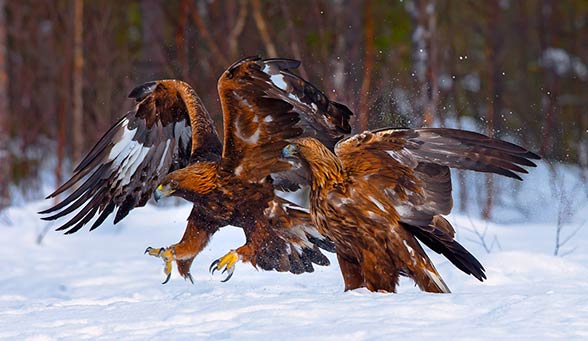
Recommended
- Argentavis
- Eagles
- Animals records
- Largest eagles Top10
- Largest birds of prey Top10
- Haast’s eagle
- Bald eagle
- Black eagle
- Steller’s sea eagle
- Philippine eagle
- Crowned eagle
- Martial eagle
- Wedge-tailed eagle
- Eastern imperial eagle
- Steppe eagles
- Bearded vulture
- Fastest animals – Top 10
- Fastest birds – Top 10
- Highest (Top) flying bird – Top 10
- Largest and heaviest birds

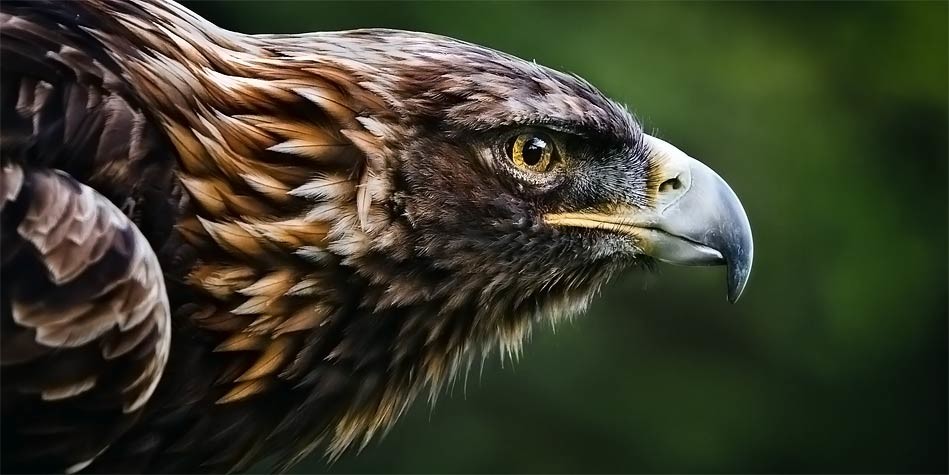


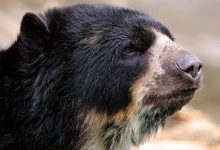






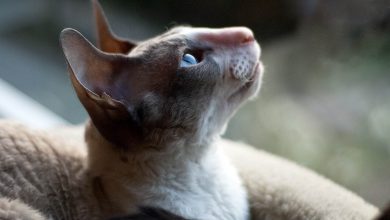

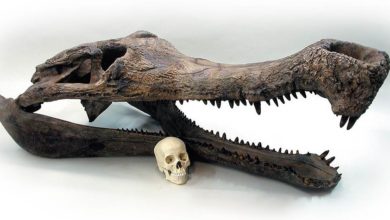

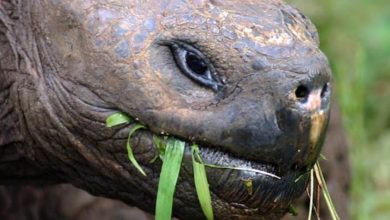



The most powerful eagle is the one that can tackle dangerous prey, a prey that fights back like large snakes, monitor lizard, large monkeys such as macaques,dogs, and small pigs.. Not because an eagle like Crowned eagle can take large deer such as bushbucks or duikers that can weigh 37 kg can be considered the most powerful eagle, any large eagle can take down a large deer which is almost defenseless to aerial predators like large eagles and some eagles are confined to what is available prey to their home range esp. if they are non-migratory like the Harpy and Philippine eagles, Unlike the Crowned eagle which can has a wide variety of large mammalian prey in its home-range, The Most Powerful Eagle is the one that can take on dangerous prey, can lift heavy prey twice as much as its own body weight up to its nest. the Philippine eagle tackles a variety of prey like large snakes such as cobra, reticulated python, monitor lizard, macaques that can weigh 6-10 kgs It was even documented taking on a large python that took a long gruelling fight and Philippine eagle had survive the ordeal and captured by the villagers due to exhaustion No other eagle specie have known to take on a large constrictor and survived… Philippine eagle is the Largest and Most Powerful Eagle in the World. Not the Crowned Eagle.
There is a picture if this eagle attaking wolfs and fox also there is a picture of one eagle attaking the most vicious and predatory mamal in the whole world, humans……. i think this eagle deseves to be on the top of the eagles chain.
I do not know if you know that golden eagle pairs maintain territories , which may be 155 square kilometers (60 square miles). Golden eagles are much more aggressive than bald eagles, they may attack intruders by diving at them or locking talons.
Golden eagles are generally solitary or found in pairs, however, wintering adults may also be found in groups during times of extreme weather or very abundant food.
Golden eagles are excellent hunters. They often work in pairs while hunting: one eagle drives the prey to its waiting partner. The talons on their feet kill and carry the prey, while the beak is only for eating.